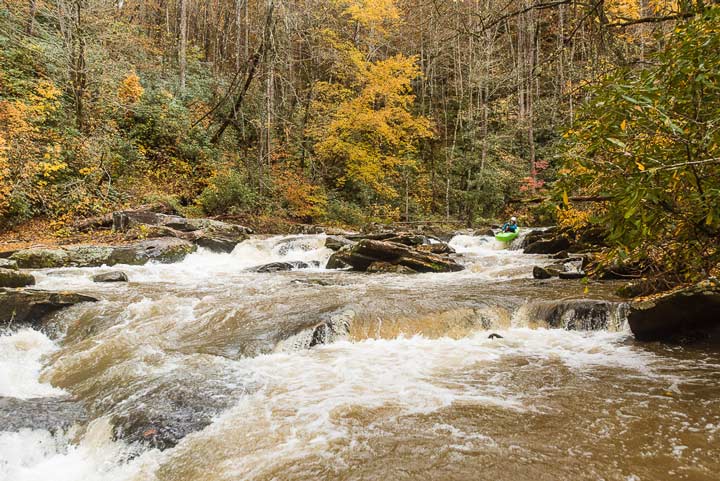Autumn: Fall into a Healthy Paddling and Daily Routine
Feeling dry, rough, cold and maybe a bit anxious?
These can be typical signs and symptoms of the variability of fall season. Fall’s changeability can leave the skin feeling rough and dry, our bellies bloated and gassy, and our minds tending toward anxiety and stress.
It’s time to introduce steadiness, softness, warmth and liquid qualities into our diet and lifestyle. Especially if we want to stay healthy to get as much out of the fall colors and paddling season as possible.
Here are my top diet and lifestyle tips for staying healthy this fall:
Start a Daily Routine
Lifestyle predictability—routines—helps our minds and bodies stay grounded and better adapt to the changing weather patterns of fall season.

Get up and go to bed at the same time every day
According to sleep scientists and chronobiologists, the best time for adults to go to sleep is between 9 and 10 p.m. and the best time to get up is 6 - 7 a.m. Getting 8 hours of restful sleep is one of the most important aspects of health and wellness, this has been proven by science. Who wants to feel tired and dragging when there’s paddling to be done?
Another key aspect of an effective daily routine is to eat your meals at the same time every day. This trains your digestive system to fire up more effectively in anticipation of food, which means your body is better able to process your food into your bodily tissues. Remember, we are what we digest.
Stay Warm
Because of the variability of the weather it's important to stay warm. Paddlers and outdoorsy folks are great at layering and fall season is an epic time to use this skill!
For optimal health, wear a scarf to cover your throat, a hat to cover your head and socks to keep your feet warm. Our feet are easy to ignore, especially if we love wearing flip flops. Keeping our feet warm goes a long way to keeping our bodies warm.
As a paddler, how many times have you heard: ‘It’s better to be too warm and have to remove a layer than to be too cold and not have a layer to put on.’ Yeah, that’s solid advice this season.
Eat Warm, Cooked Foods
Soups, stews and grains are delicious and healthy in fall season. The warm, filling and soft qualities of these meals counteract the cold, light, dry and variable qualities of the season.
Season your food with warming spices such as cumin, coriander, ginger, turmeric, cinnamon, clove, nutmeg and cardamom. These spices help to stoke the digestive fire and are super tasty. This is me telling you that there are actual health benefits to consuming pumpkin spice.
If you pay attention to your body, you'll notice that you start to crave warm, heavier foods during the fall. The natural intelligence of our bodies is always moving toward balance, if we tune in, we naturally get the information we need to stay healthy.
I’ve included my favorite curried quinoa recipe that incorporates warming spices and is easy to digest below.
Relax
Exercise science says that rest and recovery are just as important as activation. To become a better paddler and to perform better at whatever is important to you, rest and recovery time is essential. Fall is a great season to start embracing a little more relaxation.
Create a bedtime routine so that you prepare yourself for a good night sleep. Turn off screens an hour before bed, drink calming herbal teas such as lavender, chamomile and tulsi, practice gentle yoga poses and/or read a book that’s calming to the mind.
Avoid Cold, Raw Foods
If you think that salads are healthy all the time, think again. Raw foods have the same qualities as fall season—rough, dry, light and cold. When you eat foods with the same qualities as the season, those qualities start to build in your body.
Digestive distress during fall season can look like gas, bloating and constipation (all due to those rough, dry, light and cold qualities), and if you continually eat salads and raw foods during this season you can make it worse.
Paddling is no fun with a bloated belly. Instead, enjoy your veggies roasted, steamed, sauteed or cooked into the delicious soups and stews that your body is already craving.
Anna’s Curried Quinoa Recipe
- 1 cup quinoa
- 2 tsp ghee
- 1 inch piece of fresh ginger peeled and finely chopped
- 1/2 a carrot diced
- 1/2 tsp cumin powder
- 1/2 tsp coriander powder
- 1/4 tsp turmeric powder
- 1/4 tsp salt
- 2 cups water
- cilantro to garnish (or taste)
- lime wedge
- handful of sunflower seeds
Rinse quinoa in a fine strainer and set aside. Heat ghee on medium heat until melted. Add turmeric, cumin and coriander and stir until spices and ghee are well blended. Add carrots, quinoa, salt and water. Bring to a boil. Turn heat to low and cover. Let cook for 20 minutes. Remove from heat and let sit a few minutes. Top with cilantro, lime and sunflower seeds. Enjoy!

Want to learn more about seasonal diet and lifestyle choices for optimal health? Check out Anna’s Wellness Coaching and Art of Self Care Retreats . Opens a new window. to live and paddle better!
With 20+ years of experience as an accomplished whitewater paddler and instructor, NRS Ambassador Anna Levesque is the leading expert on kayak instruction for women and yoga and wellness for paddling, including SUP Yoga.
 NRS Gift Card: Always Fits, Always Wanted
NRS Gift Card: Always Fits, Always Wanted




